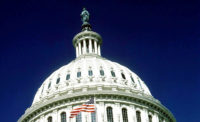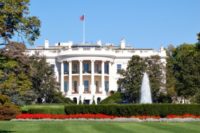 Despite his party’s losses in Tuesday’s election, President Obama still has the ability to use his executive authority to enact regulations, and one advocacy group says a silica standard should be among his top priorities.
Despite his party’s losses in Tuesday’s election, President Obama still has the ability to use his executive authority to enact regulations, and one advocacy group says a silica standard should be among his top priorities.
According to a new report by the Center for Progressive Reform, there are “13 Essential Regulatory Actions” Obama could take before leaving office that would have a big impact on occupational safety, transportation safety and food safety.
Into high gear
“The President still has a very real chance to make important progress for the American people, if he will simply resolve to push his Administration into high gear on these regulatory measures,” said CPR President and report co-author Rena Steinzor in releasing the report. “He doesn’t need to strain the boundaries of his authority one bit. He simply needs to send the message to the relevant agencies to get moving on these rules, so that they can finish their work by mid-2016.”
Enacting regulations by mid-2016 would reduce the chances of a repeal by Obama’s successor.
The Center says the rules would “save thousands of American workers’ lives each year, help safeguard the nation’s food supply, significantly reduce air pollution, protect the nation’s wetlands, and make real progress on climate change.”
The “Essential 13” includes:
Occupational safety
• Silica standard. An OSHA rule to better protect the 2 million U.S. workers exposed to dangerous levels of silica dust in the workplace.
• Child farm-labor safety rules. EPA and Department of Labor safeguards to better protect vulnerable child agriculture workers, one of whom dies in a farming-related incident roughly every three days.
Transportation safety
• Crude-by-rail safety standards. A Department of Transportation rule that would prevent train derailments and crashes involving the more than 415,000 rail-carloads of flammable crude oil traveling across the United States each year.
Food safety
• Preventive controls for processed foods. FDA rules that would prevent catastrophic foodborne illness outbreaks caused by processed foods, such as the recent Salmonella-tainted peanut butter outbreak that killed nine people.
• Produce safety. An FDA rule that would prevent catastrophic foodborne illness outbreaks caused by tainted fresh produce, such as the recent Listeria-tainted cantaloupe that killed 33 people.
• Imported food safety. An FDA rule that would hold imported foods, which comprise 15 percent of all foods consumed in the United States, to the same high standards that apply to foods produced domestically.
Environment
• National ozone air pollution standard. An EPA rule that would annually prevent up to up to 12,000 premature deaths.
• National performance standards to limit greenhouse gas emissions from fossil-fueled power plants. EPA rules that would reduce climate-disrupting greenhouse gas emissions from new and existing fossil-fueled power plants, saving thousands of lives.
• “Waters of the United States” regulatory definition. An EPA rule to ensure that wetlands and smaller water bodies receive the full protections of the Clean Water Act.
• National stormwater pollution controls. An EPA rule that would prevent harm to lakes, rivers, and streams caused by polluted stormwater.
• Coal ash waste disposal standards. An EPA rule to require power plants to better manage the more than 129 million tons of coal ash they produce annually, in order to prevent contamination of adjacent ground and surface waters, as well as disastrous spills.
• Concentrated animal feeding operation water pollution standards. An EPA rule to regulate disposal of the more than 500 million tons of manure produced each year.
• Permit “eReporting” for the National Pollutant Discharge Elimination System. An EPA rule that would strengthen the agency’s ability to respond to water pollution violations.
Riding herd
The rules identified in the report are in various stages of the process, and while some are years behind schedule, the Center says that all can be completed by mid-2016. The report calls on the President to appoint a senior White House advisor to be the point person to organize and ride herd over the effort to complete work on the regulations.
“The President has repeatedly said that he is willing to use his executive authority to do the people’s business,” Steinzor added. “Now is the time to make good on that promise.”
Steinzor’s co-authors on Barack Obama’s Path to Progress in 2015-16: Thirteen Essential Regulatory Actions, are CPR Senior Policy Analysts James Goodwin and Matthew Shudtz, and Policy Analyst Anne Havemann.
The report is available at http://www.progressivereform.org/articles/13Rules1406.pdf.



